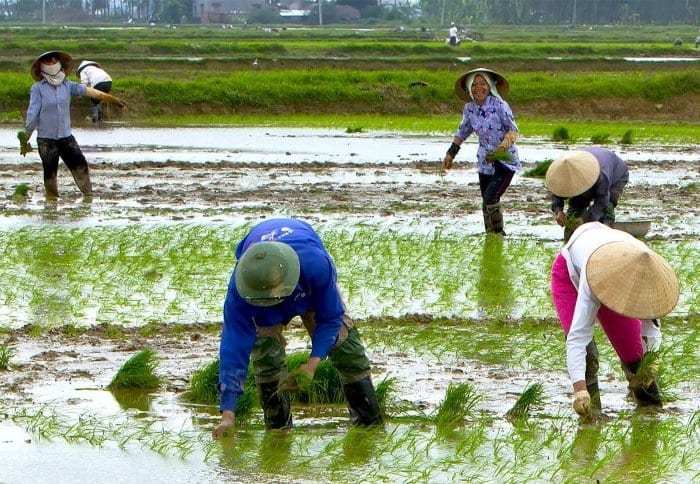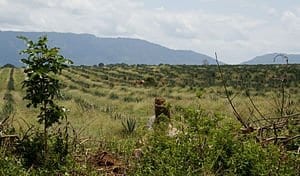
It should help biological scientists to develop crops with significantly improved yields to feed the world
How some plant species evolved super-efficient photosynthesis had been a mystery. Now, scientists have identified what steps led to that change.
Around three per cent of all plants use an advanced form of photosynthesis, which allows them to capture more carbon dioxide, use less water, and grow more rapidly. Overall this makes them over 50% more efficient than plants that use the less efficient form.
A new study has traced back the evolutionary paths of all the plants that use advanced photosynthesis, including maize, sugar cane and millet, to find out how they evolved the same ability independently, despite not being directly related to one another.
Using a mathematical analysis, the authors uncovered a number of tiny changes in the plants’ physiology that, when combined, allow them to grow more quickly; using a third as much water as other plants; and capture around thirteen times more carbon dioxide from the atmosphere.
Together, these individual evolutionary advances make up a ‘recipe’ that could be used to improve key agricultural crops that only use the less efficient form. The study’s authors say this knowledge could be used to breed super-crops such as faster growing, drought-resistant rice.
The research was led by mathematician Dr Iain Johnston from Imperial College London and plant biologist Dr Ben Williams from the University of Cambridge, and is published in the journal eLife. They came together to test whether a new mathematical model of evolution could be used to unpick the evolutionary pathways that led to the advanced photosynthesis.
“My main interest is in using tools from maths to make some concrete progress in a problem of real biological and social value,” said Dr Johnston. “Encouragingly for the efforts to design super-efficient crops, we found that several different pathways lead to the more efficient photosynthesis – so there are plenty of different recipes biologists could follow to achieve this.”
Go deeper with Bing News on:
Super-efficient photosynthesis
- The 8 Best Grow Lights for Countertop Herbs, Small Gardens, and Helping Indoor Plants Thrive
They’re also reliable and use LEDs, which, according to plant expert Erik Runkle, Ph.D. and Professor of Horticulture at Michigan State University, have longer lifespans, produce less heat, and are ...
- Level Up Your Leafy Friends With the Best Grow Lights for Thriving Plants
They’re also reliable and use LEDs, which, according to plant expert Erik Runkle, Ph.D. and Professor of Horticulture at Michigan State University, have longer lifespans, produce less heat, and are ...
- Engineered increase in mesophyll conductance improves photosynthetic efficiency in field trial
It is possible to engineer increased mesophyll conductance in plants according to new research from the University of Illinois. Mesophyll conductance plays a key role in photosynthesis and refers to ...
- Tesla supplier reveals battery with 1000km of range, super-fast charging
CATL, the world’s largest electric vehicle (EV) battery supplier, has revealed a new lithium iron phosphate (LFP) battery boasting some impressive specs. The company claims the Shenxing Plus is the ...
- Scientists develop super-efficient capacitors, enhancing lifespan and energy storage
Capacitors are crucial components in many electronic devices, from life-saving pacemakers to electric vehicles. These components are responsible for storing and swiftly releasing energy, which is ...
Go deeper with Google Headlines on:
Super-efficient photosynthesis
[google_news title=”” keyword=”Super-efficient photosynthesis” num_posts=”5″ blurb_length=”0″ show_thumb=”left”]
Go deeper with Bing News on:
Super-crops
- Qantas Super boosts ag assets by $200m
Qantas Super has injected $200 million in an agriculture investor that has a $1.1 billion portfolio of farmland across the nation.
- Qantas Super defies reluctance of peers to invest $200m into agribusiness
The $200m from Qantas Super will add to $150m already invested in two GO.FARM assets – the Riverina Trust and Sandmount Farms – to convert more than 5000ha of land with substantial water holdings into ...
- ICYMI, The ‘Dance Moms’ Cast Got Matching Tattoos & They’re Super Cute
After reliving their time on Dance Moms for the highly-anticipated Dance Moms: The Reunion special, the show’s alums decided to get matching tattoos to always have the series with them — literally.
- LadBaby Mum works up a sweat in super colourful gym outfit, but it’s her makeup choice that raises eyebrows
SHE’S known for her trademark red lipstick. And Roxanne Hoyle, aka LadBaby Mum, proved that she’ll wear the bright lippie for every possible occasion – even while working out.
- Eagles have value win Super Bowl coming off disappointing end to 2023 season
After a strong draft and coaching turnover, here's why we like the value the Eagles to bring home the Lombardi Trophy next season.
Go deeper with Google Headlines on:
Super-crops
[google_news title=”” keyword=”super-crops” num_posts=”5″ blurb_length=”0″ show_thumb=”left”]










